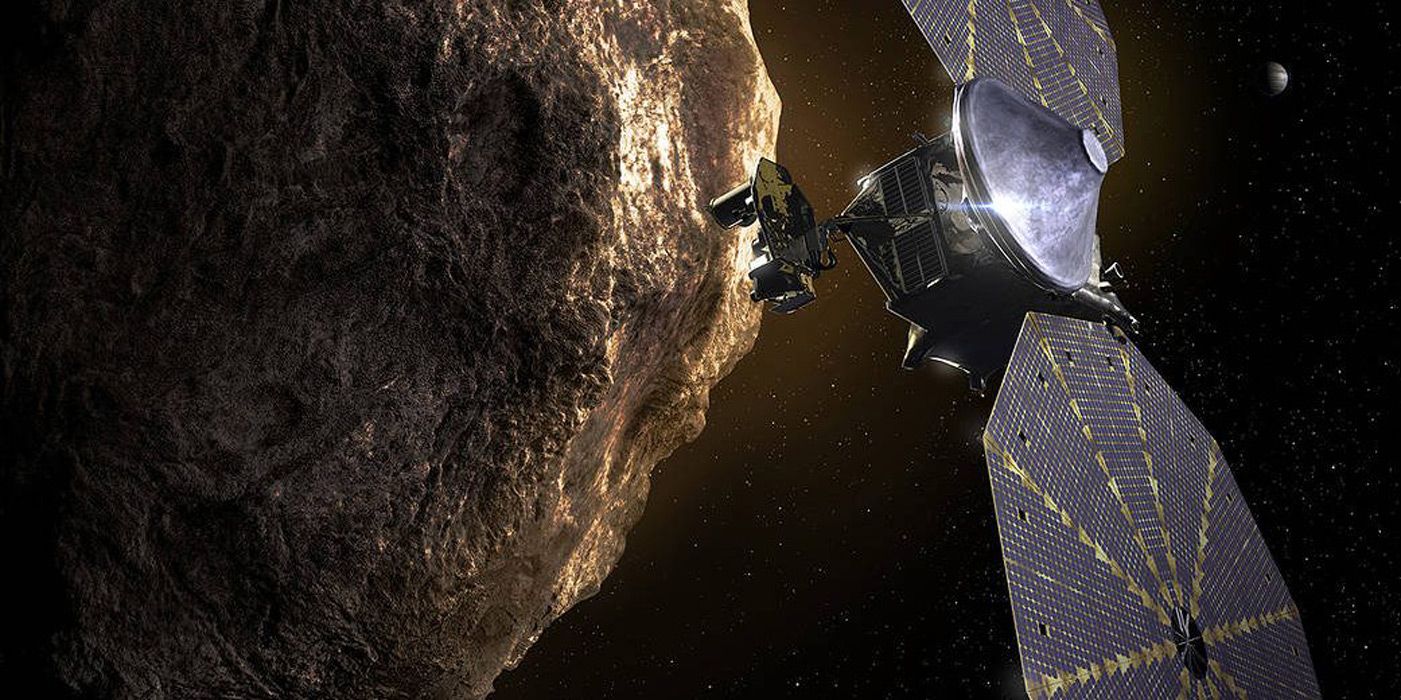
This October, NASA is sending a spacecraft to study Trojan asteroids, which share Jupiter’s orbit around the Sun. These asteroids, which likely predate the planets, may hold clues about the formation of the solar system four billion years ago. The spacecraft is named “Lucy” after the famous early hominid fossil discovered in Ethiopia. Scientists hope the insights from the mission, which may launch as soon as October 16, will rival those the first Lucy gave paleontologists about human evolution in 1974.
Lucy’s Itinerary
Lucy’s first stop is main-belt asteroid 52246 Donaldjohanson on April 20, 2025, on its way out to the first Trojans. Donaldjohanson is named after American paleoanthropologist Donald Johanson, who discovered Lucy, the early hominid fossil. It is the only non-Trojan asteroid to be visited by Lucy and will serve as a test rehearsal for the rest of the mission.
The Trojan asteroids are clustered in two “swarms,” one leading and one trailing Jupiter, both visited by the mission.
First, Lucy will head toward five of the asteroids leading Jupiter, called the L4 Trojans:
- 3548 Eurybates and its satellite, Queta
- Date: August 12, 2027
Eurybates is among the top 60 largest Trojan asteroids.
- Date: August 12, 2027
- 15094 Polymele
- Date: September 15, 2027
This Trojan was named after Polymele from Greek mythology, who was the mother of Patroclus and wife of Menoetius.
- Date: September 15, 2027
- 11351 Leucus
- Date: April 18, 2028
Leucus was named after the Achaean warrior from Greek mythology.
- Date: April 18, 2028
- 21900 Orus
- Date: November 11, 2028
Orus was named after a slain Achaean warrior from the Iliad.
- Date: November 11, 2028
The craft will then return toward Earth before continuing on to the swarm behind Jupiter, the L5 Trojans:
- 617 Patroclus and its binary companion, Menoetius
- Date: March 2, 2033
Patroclus was the first binary Trojan asteroid discovered as well as the second Trojan asteroid ever discovered.
- Date: March 2, 2033
This marks the end of the official mission, though Lucy will remain in Jupiter’s orbit indefinitely, visiting the Trojan swarms for years to come.
Observing Trojans from Earth
Though Lucy’s getting the close-up view, citizen astronomers on Earth can observe Trojans, too. The Unistellar Network has already detected Patroclus, Orus, and Leucus, and later this year we’ll have the chance to spot Eurybates and Polymele as well! Check [Unistellar's] Asteroid Occultations prediction page to find out when and where they will be visible.
This article was originally published at: https://unistellaroptics.com/nasas-lucy-mission-to-the-trojan-asteroids/





